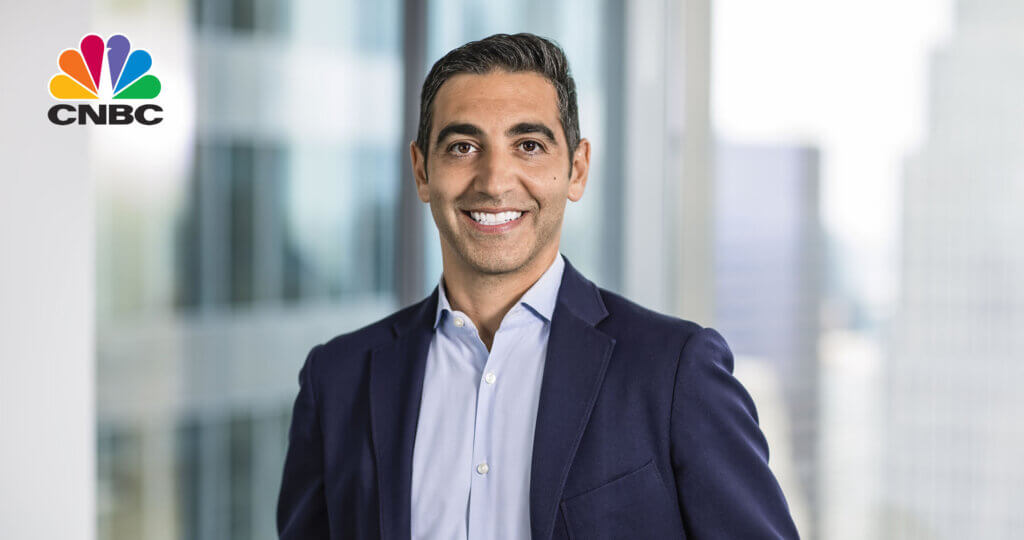Oakmark Equity and Income Fund – Investor Class
Average Annual Total Returns 03/31/17
Since Inception 11/01/95 10.28%
10-year 6.73%
5-year 8.16%
1-year 14.68%
3-month 4.14%
Gross Expense Ratio as of 09/30/16 was 0.79%
Past performance is no guarantee of future results. The performance data quoted represents past performance. Current performance may be lower or higher than the performance data quoted. The investment return and principal value vary so that an investor’s shares when redeemed may be worth more or less than the original cost. To obtain the most recent month-end performance data, view it here.
The U.S. equity markets (as defined by the S&P 500) have continued their post-election ascent, increasing 11.4% since November 8, 2016, and 6.1% in the first quarter of 2017. Against this backdrop, the Fund’s equity performance has done particularly well, returning 17.1% and 6.8% over those respective time periods. These results raise the questions: how did we call the Trump presidency (considered a low probability event at the time), and what did we do to prepare the portfolio for it? In short, the answers are: we didn’t, and nothing. At Harris Associates, we are long-term, bottom-up value investors; therefore, short-term events and macroeconomic considerations don’t tend to play a major role in our decision making process. In fact, we have half-jokingly suggested that had we known the outcome of the election in advance, we may not have positioned the portfolio as well.
Still, we believe that the Fund’s performance last quarter can be attributed to more than just luck. We seek to populate the portfolio with high-quality, growing companies that are trading at significant discounts to their intrinsic values and that are run by management teams that think and act like owners. By doing so, we believe we set the Fund’s investors up for long-term success. Although we are never sure what exactly will cause the gap between price and value to narrow, we are generally confident that it will occur over time. In this case, the recent upward move seems to be explained by the anticipation of economically stimulative policies, such as tax cuts and an easier regulatory environment, as well as improved economic indicators, such as the Purchasing Managers’ Index (PMI) and consumer confidence. While we are not going to try to predict what the next four years will hold, we believe that our group of well-managed, attractively valued companies should fare well.
For the quarter, the Equity & Income Fund earned 4.1%, which compares to 4.2% for the Lipper Balanced Fund Index, the Fund’s performance benchmark. The largest contributors to performance were Oracle, Philip Morris International, Bank of America, TE Connectivity and MasterCard, while the largest detractors were TD Ameritrade, Baker Hughes, Herman Miller, Arconic and Manitowoc. The lack of a common theme or discernable pattern amongst the winners and losers is illustrative of our bottom-up approach—the movements were mostly attributable to company-specific factors rather than overarching macroeconomic developments.
Transaction Activity
We added one new position and exited three holdings during the period. We purchased Arconic after it separated from Alcoa and became an independent public company. Arconic designs and manufactures lightweight metal parts and components that are used within the aerospace, building and construction, transportation, and other industries. Its largest division, Engineered Products and Solutions, accounts for approximately half of the firm’s profits and is considered the “crown jewel” of the company. This segment has a similar product portfolio to Precision Castparts, a previous Fund holding that was acquired by Warren Buffett’s Berkshire Hathaway in 2016. We believe Arconic’s long-term revenue outlook is bright. It should benefit from the secular trend toward more lightweight platforms in both the commercial aerospace and automotive industries as well as market share gains within these end markets. Moreover, we expect Arconic’s operating margins to expand considerably as reductions in corporate overhead, sourcing and plant optimization are met with increases in capacity utilization. Given our favorable long-term outlook for many of its end markets, the durability of its underlying business segments and its valuation discount relative to precedent transactions, we believe Arconic represents an attractive investment opportunity.
We sold three positions, all of which performed well over the past year and exceeded their sell targets. Although it is always bittersweet to sell a business that possesses strong fundamentals, is run by capable managers and has outperformed our expectations, doing so is critical to our investment process. We often explain to management teams that they should cheer for the day when we sell their stock as that usually means the company is doing well and that the consensus opinion is that leadership is doing a good job. They should be less excited when we take an initial position because this usually indicates some industry or company-specific problem that is dampening enthusiasm for the stock.
The Fund’s 2017 “graduating class” to date includes Comerica, Reinsurance Group of America and Rockwell Automation. We purchased Comerica in the first quarter of 2016 when other investors were worried about the company’s energy loans, as well as the impact of low interest rates, both of which we thought were overstated. As energy fears subsided and interest rates started to increase, Comerica’s stock price more than doubled and approached our view of the company’s fair value. We added Reinsurance Group of America to the portfolio in 2014 when worries about low interest rates and lingering fears about the company’s underperforming small Australian business drove the stock below book value. The Australian underwriting problem proved to be temporary, interest rates increased and the stock valuation quickly rebounded to a more appropriate multiple of tangible book. In terms of Rockwell Automation, this was the second time we bought the stock, and the purchase worked out well again. We initially purchased Rockwell in 2009 as the world’s economy and Rockwell’s fundamentals were suffering from the effects of the Global Financial Crisis. We have always admired the company’s strong position in factory automation along with its smart management team, so we believed that business fundamentals would rebound as the economy improved. Business fundamentals have indeed improved materially, as reflected by the stock price’s nearly fivefold increase.
The big news in the fixed income market over the past quarter was that the Federal Reserve raised short-term interest rates for the third time this decade. The amount was only 25 basis points; however, the Fed also indicated that it would likely increase rates several more times this year. Longer-term Treasury interest rates initially increased in anticipation of this move but ultimately ended the quarter fairly close to where they started. We took advantage of that brief opening, though, to modestly add to our longer dated Treasury position. On the corporate side, investment grade credit spreads have continued to tighten and are near a decade low, providing a challenging backdrop in which to find fixed income securities that we find attractive. Still, we purchased a few securities of high yield companies in which Harris Associates has large equity positions. We know these businesses and management teams well, and we believe they offer attractive spreads. Even with the addition of some longer dated treasuries and corporates this quarter, the duration of our fixed income holdings remains relatively short, which we’ve done to protect against rising interest rates.
As always, we thank our shareholders for entrusting their assets to the Fund and welcome your questions or comments.
The securities mentioned above comprise the following percentages of the Oakmark Equity and Income Fund’s total net assets as of 03/31/17: Oracle Corp. 3.1%, Philip Morris International, Inc. 2.1%, Bank of America Corp. 4.7%, TE Connectivity, Ltd. 3.2%, MasterCard, Inc., Class A 2.5%, TD Ameritrade Holding Corp. 1.3%, Baker Hughes, Inc. 1.4%, Herman Miller, Inc. 0.2%, Arconic Inc. 0.5%, Manitowoc Foodservice, Inc. 0.2%, Alcoa Corp. 0%, Precision Castparts Corp. 0%, Berkshire Hathaway Inc. 0%, Comerica, Inc. 0%, Reinsurance Group of America, Inc. 0% and Rockwell Automation, Inc. 0%. Portfolio holdings are subject to change without notice and are not intended as recommendations of individual stocks.
Click here to access the full list of holdings for the Oakmark Equity and Income Fund as of the most recent quarter-end.
The S&P 500 Total Return Index is a market capitalization-weighted index of 500 large-capitalization stocks commonly used to represent the U.S. equity market. All returns reflect reinvested dividends and capital gains distributions. This index is unmanaged and investors cannot invest directly in this index.
The Lipper Balanced Fund Index measures the performance of the 30 largest U.S. balanced funds tracked by Lipper. This index is unmanaged and investors cannot invest directly in this index.
The Fund invests in medium- and lower-quality debt securities that have higher yield potential but present greater investment and credit risk than higher-quality securities, which may result in greater share price volatility. An economic downturn could severely disrupt the market in medium or lower grade debt securities and adversely affect the value of outstanding bonds and the ability of the issuers to repay principal and interest.
The Oakmark Equity and Income Fund’s portfolio tends to be invested in a relatively small number of stocks. As a result, the appreciation or depreciation of any one security held by the Fund will have a greater impact on the Fund’s net asset value than it would if the Fund invested in a larger number of securities. Although that strategy has the potential to generate attractive returns over time, it also increases the Fund’s volatility.
The discussion of the Fund’s investments and investment strategy (including current investment themes, the portfolio managers’ research and investment process, and portfolio characteristics) represents the Fund’s investments and the views of the portfolio managers and Harris Associates L.P., the Fund’s investment adviser, at the time of this letter, and are subject to change without notice.
All information provided is as of 03/31/2017 unless otherwise specified.






